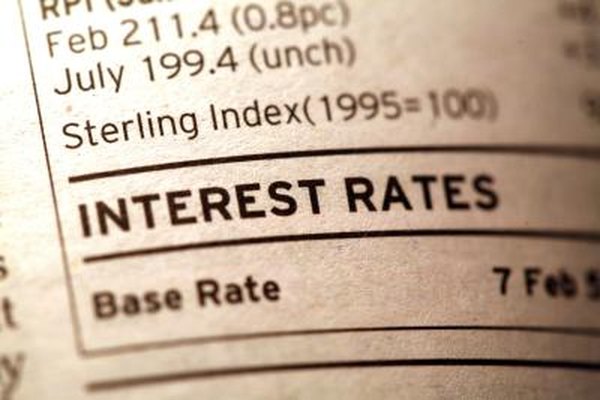Do Bond ETFs Pay a Dividend?
When interest rates rise, the price for bond ETFs declines.
Jupiterimages/Photos.com/Getty Images
Investing in bond exchange-traded funds is different than buying individual bonds. You get more diversification from ETFs because these funds contain numerous debt securities with different maturity dates. Also, bond ETFs trade on the major stock exchanges, so you can trade them as you would stocks. Of course, you'll earn income -- including dividends -- through bond ETFs, but even these payments are distributed differently than the dividends distributed with individual bonds.
Dividends
Bond ETFs do pay dividends, but they don't follow the same schedule as with individual bonds. While interest payments on a single bond are typically paid semiannually, or twice each year, bond ETFs pay dividends -- which are a combination of interest payments and market price gains -- every month. Bond ETFs are holding numerous debt securities with their individual maturity dates. When those bonds expire, an ETF manager generally replaces them with new bonds. Paying monthly dividends provides both investors and financial advisers with consistency and structure.
Fees
By design, ETF fees are lower than the expenses charged by mutual funds, because little money management is involved; the fund simply mimics performance in another bond market index, such as the Barclays Capital US Aggregate Bond Index or an index focused on a particular niche, such as high-yield bonds. Nonetheless, if you intend to buy and sell shares frequently, the transaction costs will pile up, which makes bond ETFs more economical when you hold them for a long period, according to a 2009 "U.S. News and World Report" article.
Warning
Considering that bond ETF dividends are dependent on both interest payments and price performance, your returns could be diminished if market conditions weaken. This was the case in 2012, when municipal bond ETFs, which are funds that invest in bonds issued by municipalities, saw their principal price fall amid political uncertainty about the tax status of muni bonds. As the prices for muni bond ETFs fell, so, too, did the dividends they paid to investors, according to a 2012 Fox Business article.
Profits
Dividends aren't the only way that you profit from a bond ETF. One of the benefits of investing in bond ETFs is liquidity, or the ease with which you can enter or exit a fund. The size of bond ETF assets rose 59 percent in the 12-month period leading up to September 2009 to more than $90 billion, according to a 2009 "U.S. News and World Report" article. When you sell your position in a bond ETF, you earn a profit just as you would with a stock as long as the price for the fund increased after you bought shares.
References
Resources
Writer Bio
Geri Terzo is a business writer with more than 15 years of experience on Wall Street. Throughout her career, she has contributed to the two major cable business networks in segment production and chief-booking capacities and has reported for several major trade publications including "IDD Magazine," "Infrastructure Investor" and MandateWire of the "Financial Times." She works as a journalist who has contributed to The Motley Fool and InvestorPlace. Terzo is a graduate of Campbell University, where she earned a Bachelor of Arts in mass communication.

